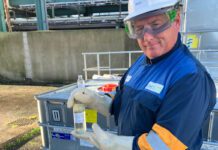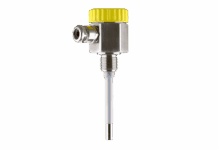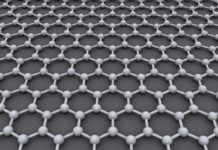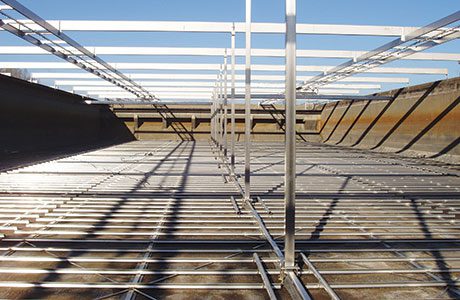
A three year project to increase capacity, improve odour control and deliver high-quality sludge for energy generation at Thames Water’s major Mogden, Beckton and Crossness sewage treatment plants is coming to fruition. Sludge handling technology is being upgraded as part of a multimillion pound investment in sewage treatment at Thames’ major London sewage treatment plants.
Following record-breaking contracts with Hydro International totalling more than £20 million, Thames’ investment in Zickert bottom and surface scraper technology is proving its worth across a total of 53 new or refurbished primary settlement tanks.
“What has emerged, to date, is that these projects have certainly met their initial aims, and further benefits may well accrue as part of longer term operation”, says Garry Strange, Sludge Strategy Manager for Thames Water. “Over the three years of installation, we were able to make further refinements to our tank installation design that maximised the immediate advantages of the Zickert scraper technology.”
These contracts were part of the £675 million upgrade of the five treatment works at Beckton, Crossness, Mogden, Long Reach and Riverside as part of Thames Water’s London Tideway Improvement programme, improving discharge quality, operating efficiency and biogas generation to supplement treatment plant energy requirements.
One of the key factors for Thames Water was consideration for nearby communities where wastewater treatment plants are being encroached by residential and commercial development, explained Garry. “Engaging with our customers is very important to us, with odour control in particular being an understandable focus for local residents.”
Odour control
A major source of odour is from the off-gases emanating from the primary sludge removal process in the open settlement tanks. The accepted practice is to provide a covering over the tanks, extract the contaminated air and scrub it to remove odours. With traditional travelling bridge technology, surface scum and bottom sludge scrapers requiring mounting on the exterior wall of the rectangular tanks, considerable headroom clearance is required for the moving machinery so covers become a major construction challenge; as well as covering more materials that are vulnerable to the corrosive damp atmosphere, there is high electricity consumption from handling the large volumes of enclosed air.
The Zickert bottom scraper is a framework of plough-shaped, profiled blades (see image above) which move the sludge in a reciprocating action to the hopper end of the tank. The Zickert surface scum scraper design has a low profile enabling covers to be installed at a much lower level compared to conventional travelling bridges, leading to lower air volumes to be purified and therefore a considerable saving in energy consumption.
“As development has encroached on our sites we have been driven to cover more of our primary settlement tanks. With the minimal headroom requirements of the Zickert top and bottom scraper technology, we were able to create an initial low volume cover design for some of the first tanks to be refurbished at Beckton. This cover design was improved to be even closer to the top of the water at Mogden and Crossness, for more energy-saving air extraction for odour treatment,” said Garry.
Thames Water made the investment in Zickert sludge scrapers based on the proven performance of some existing installations at Beckton and Mogden. Starting in 2011, the most recent upgrade work has involved both new build of rectangular primary settlement tanks and refurbishment of existing tanks, now completed in 2014.
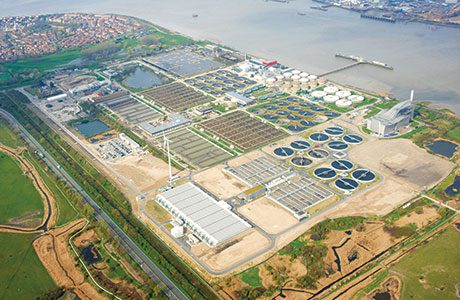
At Crossness STW, eight new primary settlement tanks have been built, contributing towards increasing the sewage treatment capacity by 44% at the site, while supporting the need to provide energy-efficient odour control and deliver sludge to provide 20% of the plant’s energy needs.
The largest sludge treatment project is at Beckton STW where a total of 24 existing sedimentation tanks have been retrofitted with Zickert sludge scrapers, adding to eight existing primary tanks already converted to the Zickert system.
At Mogden, eight primary settlement tanks had previously been retrofitted with the Zickert technology and a further eight existing primary settlement tanks and five new tanks built were also retrofitted in a 2nd phase which is part of Thames Water’s £140 million upgrade to increase sewage treatment capacity at the site by 50%.
Energy saving
“Considerable energy savings accrue with the implementation of close fitted tank covers” points out Garry. “An important further objective is to increase our use of sludge for digestion and gas production. For example we have made significant investment in new high yield thermal hydrolysis plants, especially at the bigger sites, and have a couple more sites to expand to.
“To improve gas volumes, we have been looking at the performance of our primary settlement tanks to remove sludge before thick blankets form. The use of Zickert technology can help achieve this as the technology means that the sludge has to come out fresher so we should be getting a better gas yield than with travelling bridges. We will be able to make comparisons over 2014/2015, particularly between Beckton and Long Reach, where travelling bridges have been retained, as the plant is not being encroached to the same degree.
Maintenance and tank cleaning is another long term operating cost issue that will be assessed and compared. “My operations colleagues will be looking at this, as well,” states Garry, “as it is part of the lifetime cost equation. At the moment, it seems that is easier to maintain the tanks fitted with Zickert, as most wear parts are outside the tank whereas the travelling bridge has to be completely shut down during maintenance.”
To date, opportunities to exploit the sludge handling capabilities of these scrapers have only been available for rectangular tanks. But now Hydro has introduced a rotating variant of the scraper, permitting its use in circular tanks.



